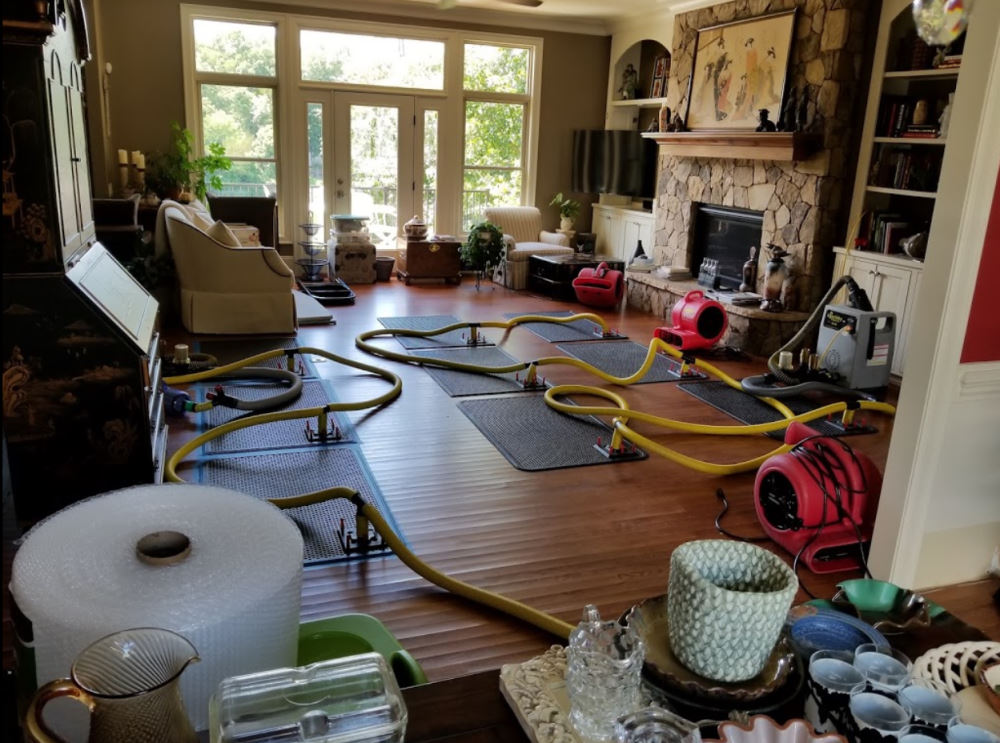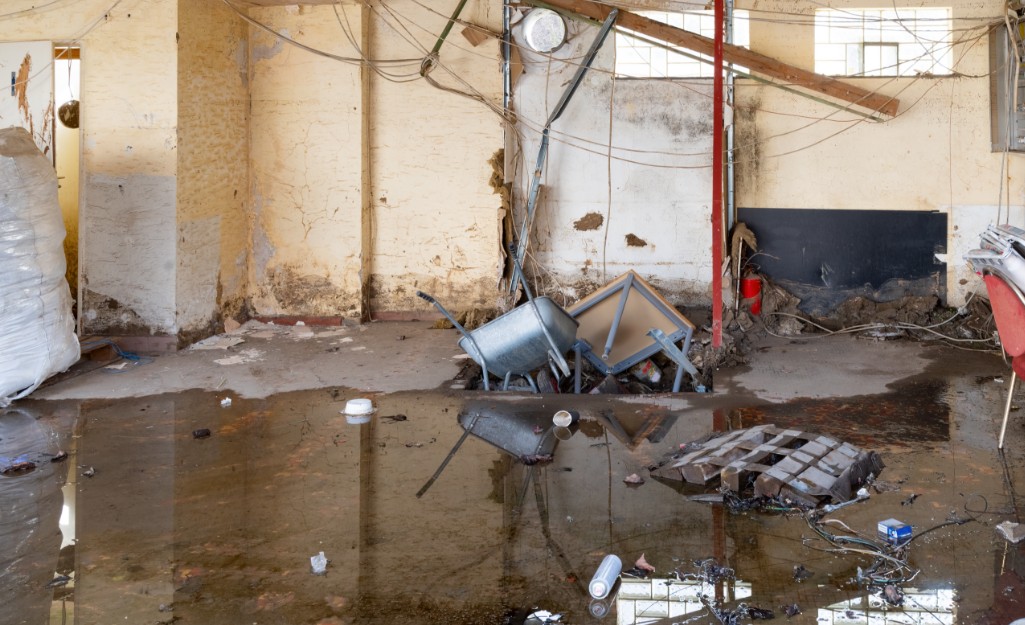Flood Damage Restoration Timeline: What to Expect from Start to Finish
Flood Damage Restoration Timeline: What to Expect from Start to Finish
Blog Article
Essential Steps to Follow for Efficient Water Damage Repair in your house
When faced with water damage in your home, understanding the vital actions for reliable repair can make all the difference. You need to evaluate the damage and guarantee safety and security before taking on the trouble. Quiting the resource of water is essential, but it's just the beginning. When you've handled that, there's a collection of actions you have to take to shield your property from additional issues. Allow's explore what you should do following.
Examine the Damages
The initial step is to assess the damage thoroughly when you discover water damage in your home. Start by identifying the source of the water intrusion. Inspect for leakages, burst pipelines, or other issues triggering the trouble. Next, check out the influenced locations for visible signs of damage, consisting of bending, discoloration, or mold development. Do not forget to search in concealed areas like behind walls or under flooring, as water can leak right into these areas unnoticed.Document the damage by taking clear pictures and notes. When discussing the situation with your insurance copyright or reconstruction experts, this will assist you. Take note of the kind of products affected, as various materials require various restoration techniques. Review the extent of the damage. Is it considerable or minor? Recognizing the scope will certainly assist you in deciding whether to handle it yourself or call the experts for a more considerable restoration procedure.

Make sure Security
Prior to you begin any remediation job, assuring your safety and security is important. Initially, assess the condition of your home. If the water's deep or if you discover electric dangers, don't go into the location. Shut off the electrical energy and gas supply to avoid accidents. Wear protective gear like handwear covers, masks, and boots to protect on your own from pollutants or mold.It's vital to remain familiar with your environments; look for slippery surface areas and sharp things. Treat it as dangerous waste if the water is from a sewage back-up. Keep pets and kids far from affected areas to prevent exposure.Once you've taken these preventative measures, you can wage the remediation procedure. Keep in mind, your safety and security precedes, and if you're ever before uncertain, it's best to consult an expert. Taking these steps will certainly help assure you prepare to take on the repair safely and properly.
Quit the Resource of Water
After guaranteeing your safety, the following step is to stop the source of water. Determine where the leak is coming from. Maybe a burst pipe, a defective appliance, or perhaps heavy rain going into through a harmed roof covering. Transform off the major water supply to your home to stop more flooding if it's a plumbing problem. For home appliances, unplug them and shut down their water valves.If the source is outside, like rain, try to divert it far from your home using sandbags or various other obstacles. For minor leakages, you could be able to make use of tape or a sealer briefly until an expert can repair it. Keep in mind, attending to the source promptly is vital to reducing damage and protecting against mold growth. As soon as you've stopped the water, you'll be in a far better setting to go on to the following action in the restoration procedure.

Remove Excess Water
Act promptly to eliminate excess water, as standing water can bring about extra substantial damage and mold and mildew development. Gather your tools: a wet/dry vacuum cleaner, pails, and towels. You can use towels to soak up the dampness if the water is shallow. For much deeper water, a wet/dry vacuum cleaner is your best choice. Make certain to clear the vacuum cleaner frequently to avoid overflow.If the water is polluted, like from a sewer back-up, put on protective equipment, consisting of gloves and masks, to keep on your own safe. As soon as you have actually removed as much water as possible, examine for covert pockets of moisture in edges and under furnishings, as these can nurture mold.Don' t neglect to switch off electric home appliances and power electrical outlets in damp locations to avoid dangers. This first step is crucial in lessening damage and establishing the stage for a successful repair procedure.
Dry and Dehumidify the Location
It's necessary to completely dry and evaporate the location extensively as soon as you have actually eliminated the excess water. Start by utilizing dehumidifiers efficiently to pull moisture out of the air and protect against mold growth. Keep an eye on humidity levels to ensure the room dries out totally.
Eliminate Standing Water
To effectively take on water damage, you need to concentrate on removing standing water as quickly as feasible. Start by gathering needed devices, like a wet/dry vacuum or a pump, depending upon the volume of water. If the water is superficial, a vacuum cleaner must suffice. For bigger quantities, a pump is a lot more reliable. While functioning, make certain to put on safety gear to maintain on your own secure from pollutants. As you remove the water, take note of concealed locations like under furnishings or in edges where water may accumulate. As soon as you've eliminated the bulk, your area will begin to dry out. This action is necessary, as lingering water can lead to mold growth and much more comprehensive damages.
Use Dehumidifiers Properly
How can you successfully use dehumidifiers to dry and dehumidify your area? Begin by placing your dehumidifier in one of the most afflicted location, preferably where water damage is most severe. Ensure to close all doors and windows to develop a closed environment. Turn on the dehumidifier and set it to the proper moisture degree, generally around 30-50%. Empty the more helpful hints water collection container frequently, or take into consideration using a model with a constant water drainage option for benefit. When possible, utilize followers to improve air flow, aiding the dehumidifier work more efficiently. Maintain the dehumidifier running until you're certain that the location is thoroughly dried out, protecting against mold and mildew development and extra damage (Water Damage Repair). This action is vital for efficient water damage repair
Display Humidity Degrees
Surveillance humidity degrees is crucial during the drying procedure, as it assists guarantee your room remains without excess dampness. Purchase a trustworthy hygrometer to track moisture precisely. Ideally, you intend to keep levels between 30% and 50%. If moisture readings increase above this variety, you might need to change your dehumidifiers or fans to enhance air flow. Examine the analyses regularly, specifically in areas susceptible to dampness, like basements or restrooms. Take into consideration boosting ventilation or using added dehumidifiers if you observe persistent high humidity. Remaining on top of these levels not only hop over to these guys quickens the drying procedure yet also stops mold development, ensuring your home stays risk-free and comfy.
Clean and Disinfect Affected Surfaces

Restore and Repair Your Home
After cleaning and sanitizing the affected areas, it's time to restore and repair your home. Begin by assessing the damages. Check for structural concerns, like deteriorated floors or walls, and address any type of needed repairs. Replacing damaged drywall or floor covering is important for both aesthetic appeals and safety.If your furniture or items were influenced, think about whether they can be salvaged or need substitute. Tidy or professionally bring back things where possible.Next, touch and paint wall surfaces up any areas that require focus. This not just boosts appearance but likewise shields surface areas from future water damage.Don' t fail to remember to check your pipes and home appliances for leaks, guaranteeing whatever's operating correctly. Take into consideration mounting a dehumidifier to protect against future moisture concerns. By taking these actions, you'll restore your home to its former glory and produce a more secure living environment.
Regularly Asked Inquiries
How Much Time Does Water Damages Remediation Usually Take?
Water damages remediation commonly takes anywhere from a few days to several weeks, depending on the extent of the damages (Water Damage Restoration St George UT). You'll desire to analyze the circumstance quickly to minimize additional problems and guarantee proper restoration
Will My Insurance Cover Water Damage Restoration Prices?
Your insurance coverage may cover water damages repair prices, however it depends on your plan. Check your insurance coverage details and call your insurance representative to clarify what's included and what you require to submit a claim.
Can I Manage Water Damage Repair Myself?
You can deal with water damage reconstruction on your own, but it's essential to examine the situation. You may desire to call experts if it's comprehensive. Constantly prioritize safety and ensure you've obtained the right tools.
What Are the Signs of Hidden Water Damages?
You might see indications of hidden water damage like warped walls, musty smells, or staining. If your investigate this site floors really feel spongy or you place mold, it's time to explore even more prior to the situation aggravates.
Exactly How Can I Protect Against Future Water Damage in My Home?
To stop future water damage in your home, you must routinely examine pipes, seal splits, maintain gutters, and assurance appropriate water drainage. Mounting a sump pump and moisture barriers can also help keep your area dry. When you find water damages in your home, the initial action is to assess the damage thoroughly. Act rapidly to eliminate excess water, as standing water can lead to a lot more substantial damages and mold and mildew development. To properly take on water damages, you require to concentrate on getting rid of standing water as promptly as feasible. As you get rid of the water, pay focus to concealed locations like under furnishings or in corners where water might collect. Water damages restoration typically takes anywhere from a few days to numerous weeks, depending on the level of the damages.
Report this page